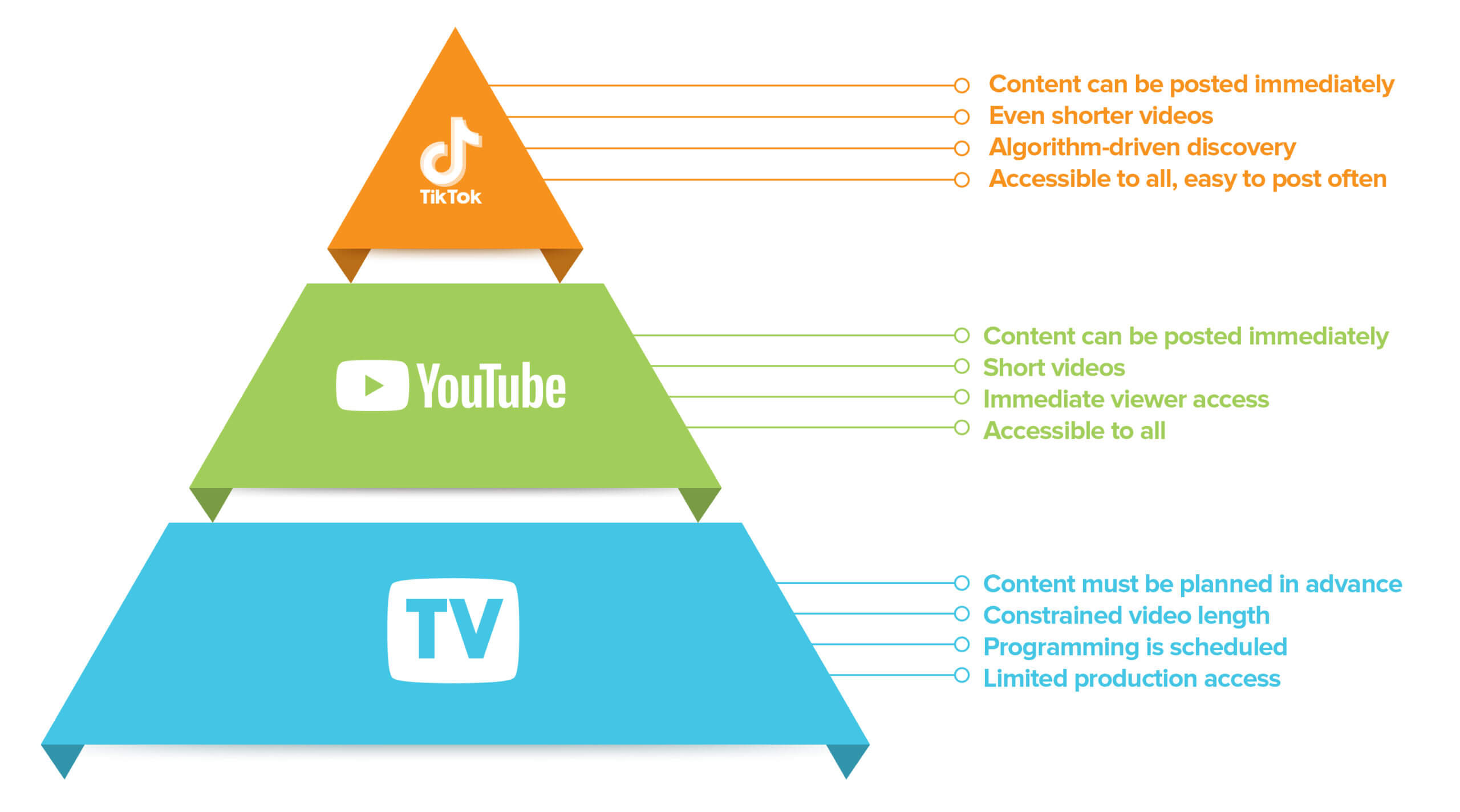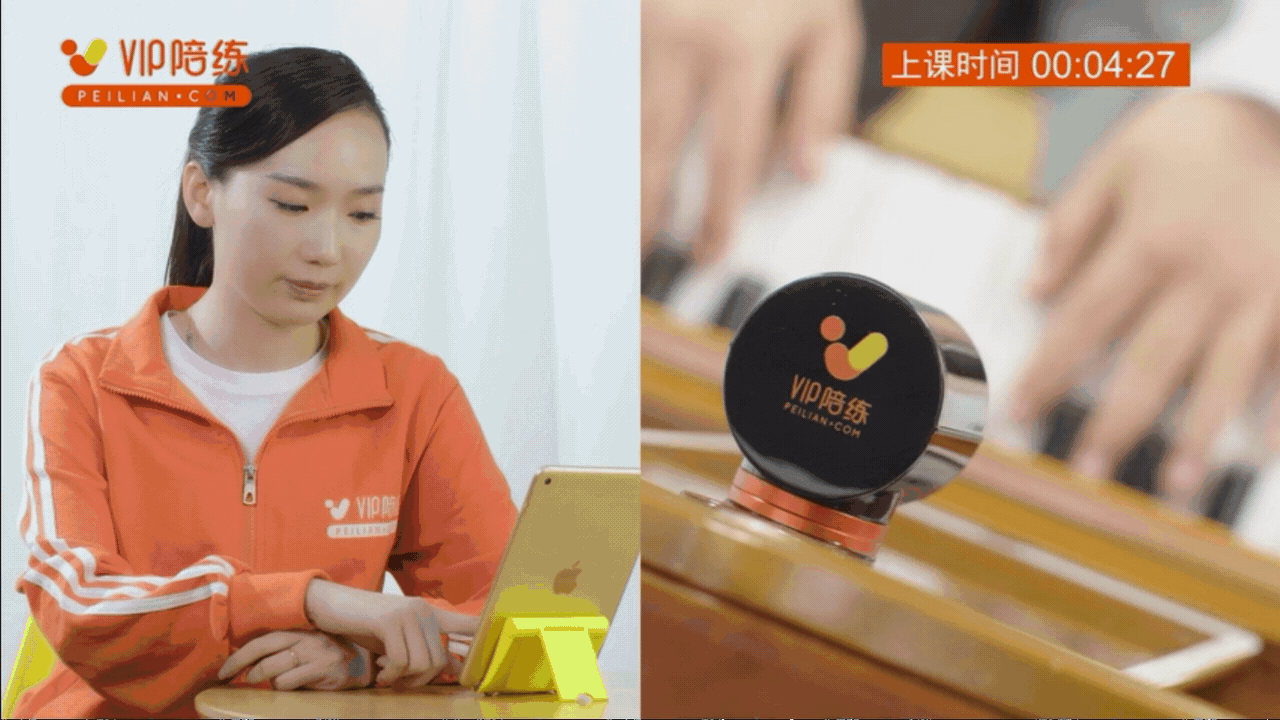Social Strikes Back is a series exploring the next generation of social networks and how they’re shaping the future of consumer tech. See more at a16z.com/social-strikes-back.
Over the past year, it’s become obvious (sometimes painfully so) that video consumption is on the rise. Americans are Zooming into work meetings, logging into online classrooms, FaceTiming friends and family, and streaming entertainment more than ever before (binge-watching and gaming are up 25 percent and 75 percent, respectively). But this screentime swell began well before COVID hit. Since 2015, video streaming has risen 13 percent year-over-year. In addition, we’re spending more and more time watching on our phones: Americans spent an average of 42 minutes a day viewing digital video on their phones last year, compared to 23 minutes on their computers.
 Now, we’re about to enter a whole new era of video-first products that extend far beyond entertainment and gaming. If phase one of video was a laid-back experience, video 2.0 will be far more interactive and participatory, with users engaging with the platform, giving direct feedback on the content, and fundamentally shaping the experience in real time. This video-first future will enable more engaging, gratifying and geographically unconstrained social experiences than ever before. Watch a basketball game with your friend who lives on the other side of the country? Shop directly with a sales associate without having to step foot in a store? With this new era of video, all formerly in-person engagements are candidates for reinvention. How did we get to this moment?
Now, we’re about to enter a whole new era of video-first products that extend far beyond entertainment and gaming. If phase one of video was a laid-back experience, video 2.0 will be far more interactive and participatory, with users engaging with the platform, giving direct feedback on the content, and fundamentally shaping the experience in real time. This video-first future will enable more engaging, gratifying and geographically unconstrained social experiences than ever before. Watch a basketball game with your friend who lives on the other side of the country? Shop directly with a sales associate without having to step foot in a store? With this new era of video, all formerly in-person engagements are candidates for reinvention. How did we get to this moment?
The evolution of video
There have been three distinct eras of modern video.
The first era was, of course, television. TV was controlled by people with very big budgets and luxurious amounts of lead time to plan and produce shows—all of which ran for a standard 30 or 60 minutes.
In the second era, YouTube broke the mold and took away those time constraints, unleashing a brand new type of content category. Now videos can be 1 minute, 10 minutes, or even 24 hours long. In addition, YouTube allowed anyone to be a creator. If you had a ring light and some nice camera equipment, you could be publishing video directly from your living room. Furthermore, those videos could be published immediately so more content could be timely.
 Then we entered the third era—the TikTok era—where video has been condensed to one minute or less. Some of the best TikTok videos are only 10 or 20 seconds long. This creates an interesting flywheel: forget all the gadgetry you once needed to look legit on YouTube; now all you need is a smartphone. We’re using our phones to create videos, engage with them, and watch more videos. This perpetual flywheel is what has allowed TikTok to become the fastest growing social network in the world: TikTok reached 1 billion monthly active users in just four years, half the time it took Facebook, Instagram, and YouTube.
Then we entered the third era—the TikTok era—where video has been condensed to one minute or less. Some of the best TikTok videos are only 10 or 20 seconds long. This creates an interesting flywheel: forget all the gadgetry you once needed to look legit on YouTube; now all you need is a smartphone. We’re using our phones to create videos, engage with them, and watch more videos. This perpetual flywheel is what has allowed TikTok to become the fastest growing social network in the world: TikTok reached 1 billion monthly active users in just four years, half the time it took Facebook, Instagram, and YouTube.
What makes TikTok so magical? Real-time interactivity is baked into the viewing experience, rather than being relegated to the comments. TikTok users are scrolling away the videos they don’t like, hearting the ones they do, reacting, and following creators. TikTok has fundamentally changed the way we think about video, and through the interactivity it is able to personalize our feeds with an extremely high hit rate. In the future—and, increasingly, the present—video is no longer going to be something that we passively watch; it’s going to be something that we do.
Think about all the social video interactions that we can have with our tutors, our coworkers, our fitness instructors, and more. Video will soon become the backbone of a whole new suite of vertical platforms. Conferences, classrooms, dates, group fitness, tutoring sessions, healthcare appointments—all the interactions we used to think had to happen face-to-face—we’re now finding out these interactions work just as well, if not better, in a video world. There’s a whole category of tools that will enable this revolution.

The video-first future: case studies
There are many areas where video-first is going to dramatically impact society and our social interactions. These are just a few examples.
Education
Students in much of the country are still grappling with the transition to remote and hybrid learning. While instructors and students are valiantly adjusting to the new norm, in many cases kids are still lost in a “Brady Bunch” grid of faces. It’s often difficult to maintain students’ attention for hours at a time, particularly for younger pupils. Contrast that current reality with this education platform in China:
In this particular example, a classroom of students is reading a book together with the teacher. A student is “called out” to answer a question, and when she gets it right, you see a virtual sticker flying across the screen. Through this built-in interactivity, video can enhance the excitement of mastering a subject and the motivation to learn.
The same platform also incorporates various tools for teachers. For example, instructors can give real-time quizzes to get a clear and immediate understanding of student comprehension and refocus the lesson accordingly. That kind of instantaneous feedback is difficult to generate in a real-life setting classroom. Video-first teaching platforms can unleash a range of new tools for teachers.
Another increasingly popular example is what I like to think of as “math meets Mickey Mouse.” These types of platforms take academic curriculum and mix it with fun. The resulting edutainment is a hit for both kids and parents. How can a customer churn when their kid likes their class as much as Saturday morning cartoons and video games? In these kid-friendly entertaining education platforms, kids get that immediate feedback and virtual rewards whenever they get an answer right. Here’s an example of one such platform in China:
Shopping
Video ecommerce is another massive opportunity. Consider today’s Instagram ads. Sure, they’re video, but what they really are is shortened commercials. Contrast that with different kinds of shopping apps that are already live and widely adopted in China. This particular app video is from JD.com, a popular shopping website in China. In this app, you can see a celebrity hosting a video marathon.
Imagine Bono or Beyonce doing QVC, but doing it in an interactive way where they can answer questions directly, where shoppers can “heart” and show feedback, and where browsers can claim different offers. It’s like Black Friday, every Friday. The video shopping that we experience in the US today is still nascent compared to what’s possible. This kind of video format is thriving in developing countries. We believe the same kind of behaviors will come to the US as well.
Education and shopping are both areas where video dramatically changes the user experience and makes it incredibly interactive. But another benefit of video-first platforms is their huge impact on unit economics and the ability to grow the entire market.
Skills sharing
Think about learning a brand new skill, like learning to play the piano. There are new video-first platforms that make the cost of a piano lesson 10X cheaper and 10X more accessible, allowing parents all over Asia to give their kids the gift of music. In the example below, you can see a child getting direct feedback from a teacher sitting right next to them.
For many, the problem with traditional, analog piano lessons is the travel time and expense involved. Often, classes cost much more in cities than in rural areas. But what if the teacher didn’t have to sit next to you? What if the teacher didn’t even have to be in the same country as you? That’s exactly what the startup Peilian does. It allows video instructors to give real-time feedback to students without having to be in the same city, or even the same time zone.
As a result, classes are one-fifth the cost of a typical, in-person class. Think about all the other features that can be added with machine learning and AI—these teachers can become incredibly efficient at delivering feedback to students. Learning a new skill is a great example of how video makes something 10X cheaper and 10X more accessible.
The opportunity for video-first
The social opportunities in this space fall into two categories:
- Video-first platforms
- New tools that enable developers to integrate video into their apps with simple APIs
We’re already seeing strong examples of video-first platforms that are upgrading the typical in-person experience in the U.S., too. ZipSchool is creating an interactive iteration of Sesame Street—complete with stickers and animation—for kids to learn drawing, singing, and other extracurricular activities. Lunchclub is reinventing the drudgery of networking by matching users with like-minded professionals from the comfort of their office or their living room; the ROI is much higher than the usual blind meet-up at a coffee shop. Run the World is at the forefront of digital conferences, far beyond one-to-many streaming. The platform enables all the interactions that normally occur at a physical conference—from breakout sessions to audience Q&As to hallway conversations and smart networking—in a video-first framework. And there are other sectors still waiting to be disrupted—what an efficient way to speed date! Or dance lessons with Steezy, where everyone can practice dance moves in the safety of their living rooms. In China, Tangdou has taught over 200 million users how to dance. In real estate, recruiting, and beyond, the sectors that will be disrupted are endless.
Secondly, tools like Mux and Descript are examples of how developers can incorporate video into their apps via very simple technology. By using APIs, Mux allows almost any app to easily add video functionality. Similarly, Descript makes editing video and audio as simple as editing a Word document. We believe many of the video-first platforms of tomorrow will be built on top of these types of video tools.
* * *
Those who view the present as a harbinger of our future—a purgatory of glitchy video meetings, zoned-out kids, and an onslaught of irrelevant ads—fail to see the true potential of video. Video is evolving from an add-on to a requisite. Through innovative new platforms and integrated tools, video is dramatically reinventing the way we shop, learn, work out, network, even party. Video can turn intimidating or awkward tasks like learning a new language or making professional connections more engaging, interactive, and fun. That vision has already been realized elsewhere around the world; now the pandemic has accelerated video-first innovation here.
Soon retail will be revitalized by compulsively watchable, instantly shoppable commercials. Virtual classrooms will transition from passive, static lectures into interactive, engaging, mind-expanding games and entertainment. And learning new skills and connecting with new people will become more accessible, affordable, and convenient than ever. We’re in the midst of an important shift: from observers to active, native, video-first participants.
Everything you thought you knew about social networks is getting reinvented.
Our new series, Social Strikes Back, explores the hyper-social future of consumer tech.
See more









